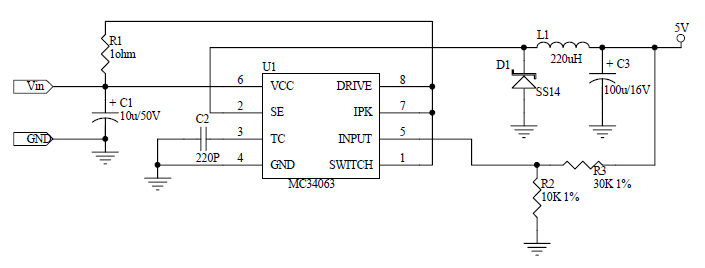Power, Reset, and Mode Selection Lines
#7 |
VCC |
Input |
Positive power input, 5V nominal, +/- 5%, app. 230mA |
#8 |
GND |
|
Ground |
#2 |
RST |
Input |
Reset, active high |
#1 |
MD* |
Input |
Mode selection pin |
* Implemented in (supported through) firmware
The EM203A should be powered from a stabilized DS power supply with output nominal voltage of 5V (+/- 5% tolerance). Current consumption of the EM203A is approximately 220mA (in 100BaseT mode).
Proper external reset is a must! Reset pulse should be active HIGH. We strongly advise against using low-cost RC-networks and other unreliable methods of generating reset. Reset should be applied for as long as the power supply voltage is below 4.6V. We recommend using a dedicated reset IC with brownout detection, such as the MAX810. Reset pulse length should be no less than 50ms, counting from the moment the power supply voltage exceeds 4.6V.
If the EM203A is used to serve as a communications co-processor in a larger system that has its own CPU it is also OK to control the RST line of the EM203A through a general-purpose I/O pin of the "host" microcontroller. I/O pins of many microcontrollers default to HIGH after the powerup and this means that the reset will be applied to the EM203A in parallel with the reset of the microcontroller. All the host microcontroller has to do is release the EM203A from reset at an appropriate time by switching the state of the I/O line to LOW.
The MD line of the EM203A is used to select the operating mode of the EM203A and/or its application firmware. This pin has the following functionality:
| • | When the EM203A powers up it verifies the state of the MD input. If the MD input is at HIGH the EM203A proceeds to verifying and running the application firmware loaded into its internal FLASH memory. If the MD input is at LOW the EM203A enters the serial upgrade mode. |
| • | When the serial-to-Ethernet firmware is already running the MD line is used to make the EM203A enter the serial programming mode. |
When the EM203A is used as a co-processor in a host system the MD line can be also controlled by the host microcontroller. Ability to control both the RST and the MD lines will allow the host microcontroller to switch between the operating modes of the EM203A.
Power supply circuit
Many power supply circuits will work well. The one below is being used by Tibbo. The circuit can handle input voltages in the 9-24V range.

Notes:
| • | U1 is a popular power IC manufactured by ON SEMICONDUCTOR. |
| • | C1 and C2 capacitors: Do not use SMD capacitors -- use regular through-hole aluminum capacitors. This really helps reduce noise produced by the power supply. |
| • | This is an analog circuit, so layout matters. Apply reasonable "good layout" effort. |
|
Ideally, one should use an oscilloscope to see what sort of "square wave" the power supply generates, both at low and high input voltages, as well as light and heavy loads. There are no recipes here -- just try and see what works for your circuit. |